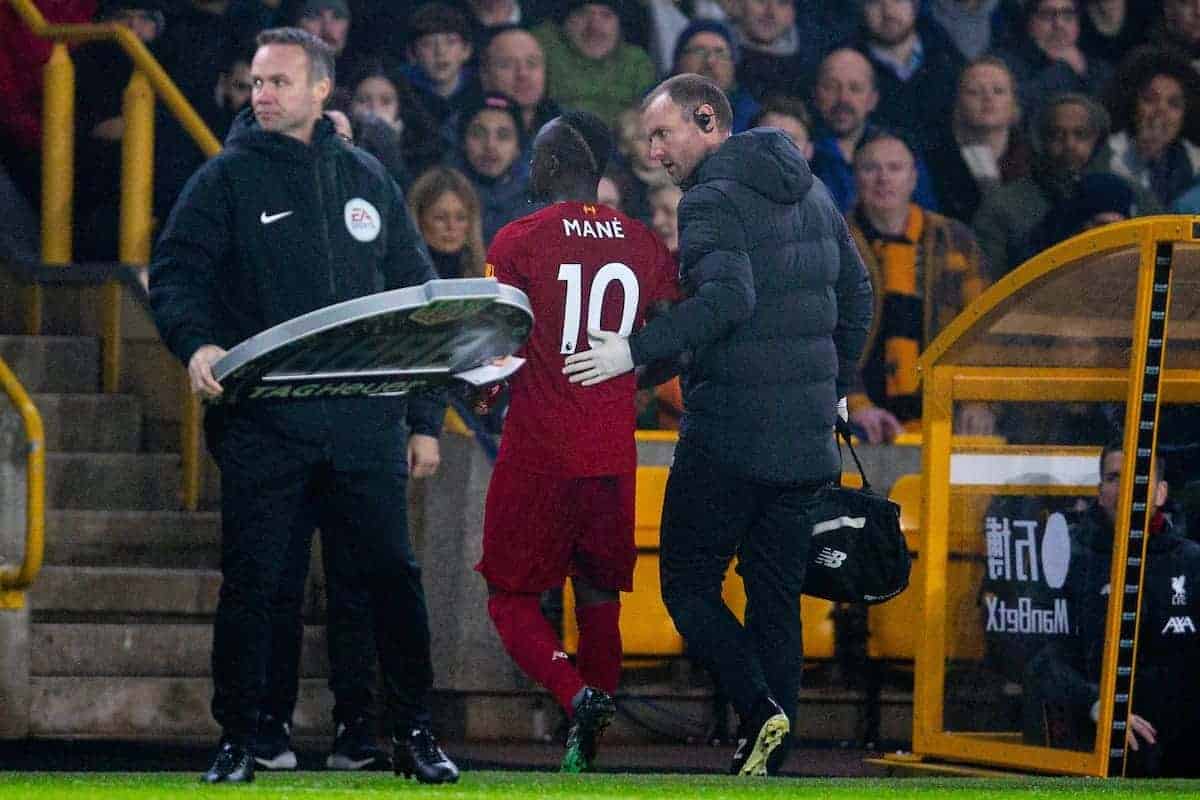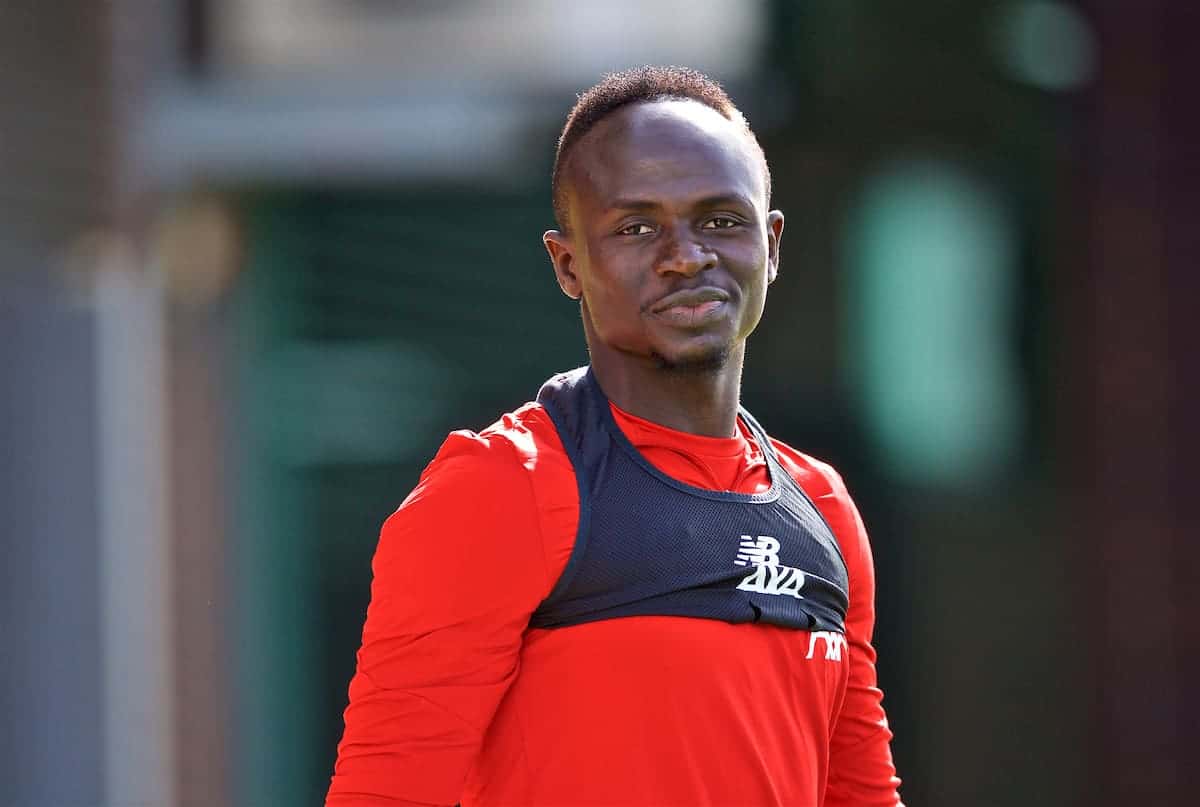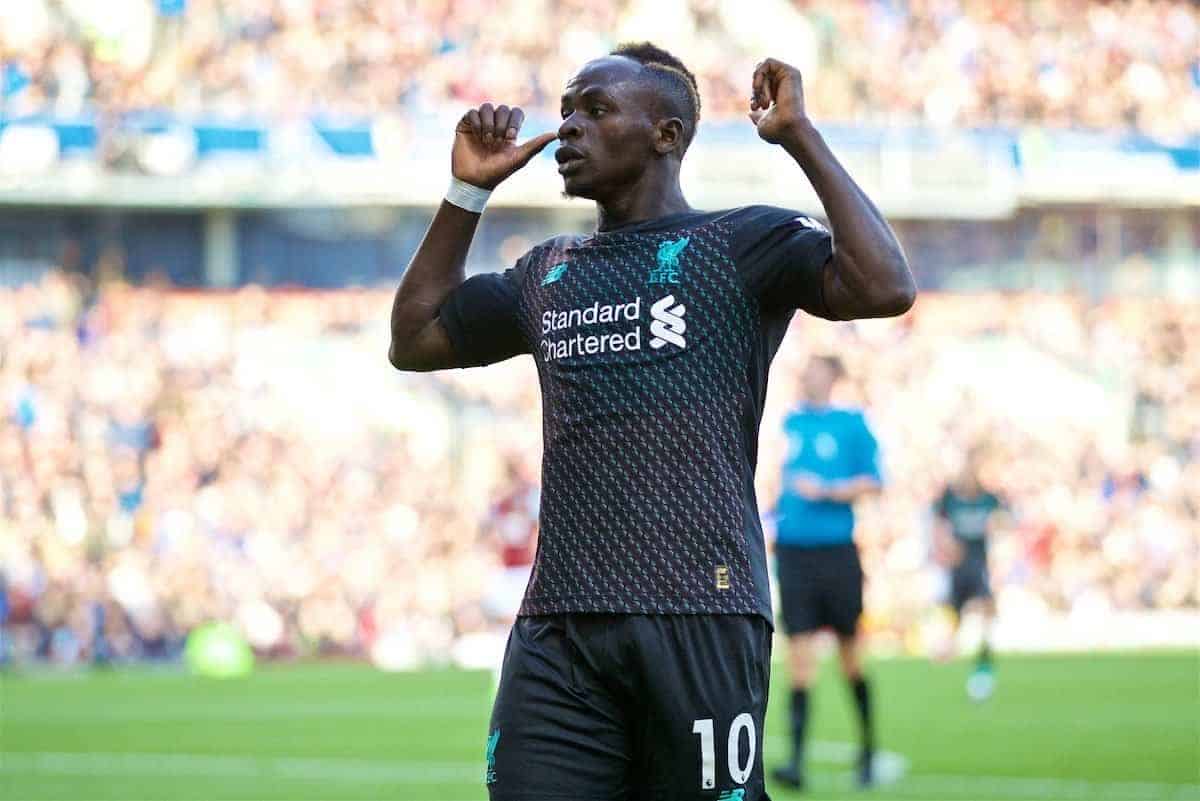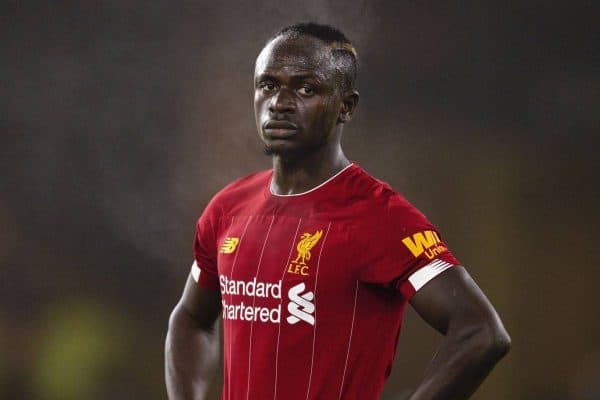Sadio Mane‘s hamstring injury is not expected to keep him out for much longer, but there are a number of re-injury risks Liverpool will be aware of.
Mane came off the pitch after 33 minutes of the 2-1 win at Wolves on January 23 with an apparent hamstring injury.
Initially, the substitution sounded pre-cautionary with Mane allegedly reporting a “twinge” in the hamstring, but Jurgen Klopp issued an update that he had actually suffered a “small tear.”
In this article I’ll explain the injury, Mane’s return-to-play timeline and five key re-injury risks to be aware of moving forward.
The Injury

Anatomy
The hamstrings are actually a group of three muscles—the semimembranosus, semitendinosus, and the biceps femoris—which run down the backside of the leg.
Function
The hamstrings are heavily involved in football activities, from acceleration and deceleration to running to jumping to ball control.
This may explain why the hamstrings are the most commonly injured muscle in football, with some studies showing up to a 50 percent prevalence rate in elite footballers.
When a hamstring takes on more stress than it can handle, the muscle fiber tears.
Severity & Return Timeline

Hamstring tears are typically categorised into three grades, based on a combination of factors that include hands-on evaluation, imaging and function.
A “small tear” as Klopp described, and the fact that Mane walked off the pitch without issue, points to a grade 1 injury.
The average return-to-play timeline for footballers with this injury is roughly 14 days. That timeline aligns with Klopp’s comments that Mane’s rehab would begin ramping up the following week after injury.
Re-injury Risks

Although Mane’s hamstring tear is considered mild and he’ll very likely be back on the pitch at Norwich on Feb 15, he won’t be in the clear just yet.
This is because arguably the hardest part with hamstring tears is avoiding re-injury and Mane has several key risk factors at play.
1 – Previous injury
A previous hamstring tear is by far the most predictive of future hamstring tear.
To that point, high-level research shows nearly a 30 percent rate of re-injury in elite athletes, most occurring within the first two weeks, and nearly three times higher risk of hamstring injury for up to a year following the initial tear.
2 – Age & years played
Mane is 27, and the research indicates that athletes older than 25 are up to 4.4 times more likely to injure a hamstring compared to younger players.
Further, Mane has been playing top-flight football for a little over eight years and the data suggests that the overall risk of hamstring injury increases by 30 percent year-over-year after a pro footballer starts his or her career.
3 – Pace & running quantity
Higher pace and higher running quantity during a game have both been linked to increased risk for hamstring injuries. Mane certainly fits into both those categories.
4 – Fatigue & game intensity
Muscle fatigue and higher-intensity matches have been associated with higher risk for hamstring injuries and Mane will be a key player down the stretch for Liverpool in their Premier League and Champions League repeat title aspirations.
Every time Jurgen speaks out against the heavy winter schedule and archaic FA Cup replay setup, I let out a cheer.
5 – Ethnicity
Lastly, there’s some research showing that players of African or aboriginal descent—as we know, Mane is Senegalese—have a significantly higher risk for hamstring tears.
The Upshot

For these reasons, I fully expect Mane and the medical staff to be extremely diligent and particular with his ongoing strength and conditioning protocols after he’s back on the pitch and heading into the home stretch of the season.
This methodical approach is further reinforced by a manager who seems to understand player fitness and gradual return-to-play protocols at a level that is far beyond most of his peers.
All in all, Mane’s hamstring tear is mild but the sensitive nature of these injuries combined with his specific risk factors will require extra diligence from player, medical staff and coaching staff alike.

















Fan Comments